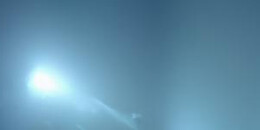Snowmaking as comprehensive insurance
The after-effects of the SARS-CoV-2 pandemic were still being felt and the next challenges, triggered by the war in Ukraine, were already emerging. Price increases in various areas, especially energy (fuel, gas, and electricity) followed. In addition, the federal government announced a probable gas and electricity shortage towards the end of next winter. What was the pandemic in the past two years could become the electricity shortage in the winter of 2022/23, it said.
No sooner had the news been communicated than the first federal politicians from the «Mittelland» began to speak out in June 2022, using the «ski lifts» as an emotional example of ill-considered demands and proposed solutions. Action was called for. As during the pandemic, it was once again necessary to explain the importance of cable cars for the mountain region. The unobjective comparisons with leisure infrastructures in the midlands had to be put in perspective. The industry reacted early, and Seilbahnen Switzerland took the lead.
Not surprisingly and also expectedly, the snow making season that is now underway is triggering discussions and the need for explanations. It is often misunderstood that the mountain railway companies do not make snow for reasons of competition or pleasure, but to reduce the economic risk. Guest expenditure of CHF 1.00 at the resort lifts generates CHF 5.00 to CHF 7.00 in the destinations. In other words: two-thirds of the tourist value added in Graubünden is resort lifts-induced. The Graubünden resort lifts, for example, generate 25% of their traffic revenue over Christmas/New Year. The festive season without snow, which cannot be produced and prepared so quickly in one or two nights, means major economic losses for the winter sports destinations. Snow making is not primarily about an early start to the season, but about safeguarding the festive season and ultimately the entire winter season. Snow making can be compared to comprehensive insurance for all service providers. It is a matter of weighing up the risks: natural weather conditions versus economic losses. The earlier start of the winter season is a welcome side effect that goes hand in hand with the ongoing expansion of services.
Saving electricity has been an issue actively addressed by the resort lifts for years. As so-called large consumers, the larger cable way companies have concluded a target agreement with the federal government, which obliges them to achieve economically worthwhile energy targets within a certain period of time. In addition, there are ongoing renewal investments in the cable way systems (e.g. direct drives) and efficient snow-making systems, supported by professional piste management such as the snow height measurement system on the snow groomers. A catalogue of additional voluntary electricity-saving measures is intended to help avoid the electricity shortage. These include, for example, cold water on toilet facilities, reducing heating in buildings, no garaging of gondolas/chairs in fine weather, and much more. In addition to energy optimization and the savings programmes, there is an increasing focus on energy self-production with photovoltaic facilities, small hydroelectric power plants, etc. The mountain railways demand that large-scale consumption be reduced.
As large consumers, the resort lifts do not demand special treatment. However, they expect equal treatment with other large-scale consumers from industry and the economy. The production of technical snow is to be put on an equal footing with, for example, a production plant in the machine industry and not with neon signs or private Jacuzzis.
The following arguments support the necessity and benefits of technical snow making:
Technical snow ensures piste quality
Today's guests expect top-prepared ski slopes; from the first day to the last, including the descent into the valley. The technological development of skis and snowboards has also changed the requirements for slope preparation. Snow sports slopes have to be prepared very compactly to meet the demands of winter sports enthusiasts. Today, neither the supply nor the quality of the slopes can be guaranteed with natural snow alone. And this requires technical snow, the density of which is several times higher than that of natural snow.
Safe slopes
Technical snow makes skiing safer because dangerous and bumpy spots can be avoided. In addition, technical snow protects the sensitive turf from mechanical stress caused by snow groomers and ski edges. A sufficient snow cover insulates the ground and prevents ground frost.
The water stays on the mountain
Snowing in from mid-October to December takes place at a time when electricity demand in the valley is low. The tourist businesses (resort lifts, hotels) have no or a limited season. In addition, water withdrawal is clearly regulated, and the necessary residual water volumes for watercourses are regulated and guaranteed. The meltwater flows back into the natural cycle. With the melting of the snow and through evaporation, one hundred percent of the water returns to nature. The water is borrowed, not consumed.
Efficient snow making systems
The efficiency of snow-making systems has doubled in the past 13 years. In March 2009, the Institute for Public Services and Tourism at the University of St. Gallen calculated an average energy consumption of 31,500 kWh per year per kilometre of piste covered with snow. This has been reduced to about 17,000 kWh in the past years and thus more or less halved. In addition, snow making with snow lances in particular massively reduces energy requirements. In the past 18 years, the specific compressed air consumption per lance has been reduced by a factor of 10.
Facts and figures on technical snow making
The energy consumption of technical snow-making systems in Switzerland is around 0.1% of the country's total electricity consumption and amounts to around 60 GWh/a. The energy consumption of the snow-making systems is largely because they are operated by a single source. Energy consumption is largely determined by the energy required for water transport (approx. 60% of the energy used) and the energy required for the "freezing process" (snow making). Snow is mainly produced in the months of November and December. In the months of February and March, snow is usually only made in exceptional situations: in special weather conditions or for sports competitions.
- Ski slope area in Switzerland: 22,000ha
- Snow-covered piste area (53%): 11,600ha
- Electricity consumption for snowmaking: 60GWh/a
- Electricity consumption for snowmaking: 4.1 kWh/m³ or 5'100 kWh/ha
- Amount of water used: approx. 13 million m³






